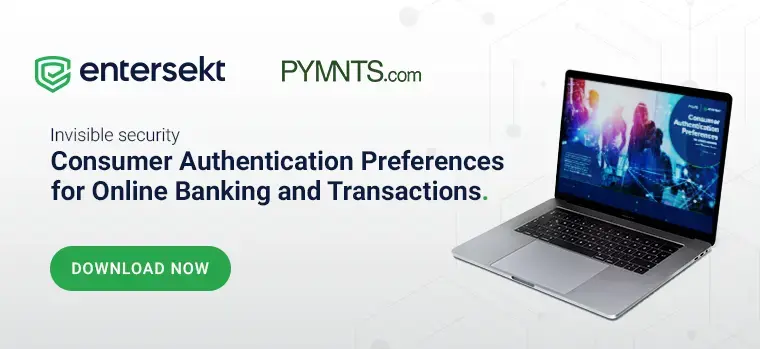Today’s consumers have more choices in how they transact, evidenced by the continued spike in popularity of new fintechs and challenger banks, and the growth in embedded finance solutions. But a bigger variety of choices pushes up customers’ expectations of all mobile banking apps — they want a modern experience that is intuitive, secure, and personalized.
In our series: Securing the mobile banking channel, we explore the trends and opportunities in this competitive ecosystem. In this, blog 3 of the series, we help banks and credit unions better understand the latest customer sentiment on features vs security.
The age-old debate: Features vs online payment security
Yes, the debate continues — and may never reach a final conclusion. While consumers want their mobile banking apps to be as quick and intuitive as their favorite food delivery app, their expectations on the security of their mobile banking transactions are equally high.
Consumers may value modern banking features like rewards, alerts, and customizability in their mobile banking app, yet recent findings also suggest that security is tipping the scales in the ongoing ‘features vs security’ debate.
"While consumers want their mobile banking apps to be as quick and intuitive as their favorite food delivery app, their expectations on the security of their mobile banking transactions are equally high."
According to a recent survey by mobile development platform, AppDome, 62% of consumers say mobile app security protection and features are equally important. But, if you also factor in that 32.7% felt that financial services apps should have the highest security and 24.3% believed that protection against security, fraud, and malware is actually more important than features in their app, security appears to becoming more important.
With mobile banking threats like trojan attacks doubling from 2021 to 2022, Kaspersky reports, this shift in consumers’ concerns is understandable.
The role of visible vs invisible security in the customer experience
One key issue that underpins the features and security debate is the customer’s preference for visible vs invisible security. Invisible security happens silently in the background. For example, a customer makes a regular payment on their mobile banking app and enjoys an uninterrupted banking experience as their transaction is authenticated silently.
Now, if that same customer suddenly needed to make an unusually large purchase, such as buying the latest MacBook Pro, additional, visible security should come into play. And they may be asked to verify their identity via biometrics, for instance. Though this is an extra step for them, research reveals that most customers want visible authentication when they perform an irregular or high-value transaction.
A recent survey by Entersekt and PYMNTS, entitled Consumer Authentication Preferences for online banking and transactions, confirms these preferences.
- 71% of respondents prefer using mobile phones for sending and receiving money from family and friends.
- 62% don’t want to verify their identity every time they pay for goods or services.
- For routine transactions, like transfers or everyday mobile payments, many consumers prefer invisible security.
- For higher-risk or infrequent transactions, one in three consumers prefers more visible security measures.

Luckily, there is a solution to meet your customer’s need for convenience across all these variables — Context Aware™ Authentication: A solution that employs the best authentication mechanism for each transaction, balancing visible vs invisible security measures. Context Aware™ Authentication enables FIs to obtain sufficient context about each transaction, ensuring the user experience is secure and without unnecessary friction — both a must for mobile banking!
From churn to advocacy: The role of mobile banking security
According to a recent Capco banking survey, approximately 75% of respondents cited fraud issues as their main reason to question their financial service provider (FSP). Interestingly, the survey also reveals that customers using digital-first banks are more concerned about fraud than those using traditional FIs.
When the security of customers’ data on mobile banking apps (and across all banking channels) is at the top of the list, and customers are protected against fraud, FSPs will experience less customer churn. What’s more, if the security mechanisms match what customers expect (i.e.: a secure and convenient experience), then the result may even extend to brand advocacy!
"When the security of customers’ data on mobile banking apps (and across all banking channels) is at the top of the list, and customers are protected against fraud, FSPs will experience less customer churn."
Take a look at these revealing stats from AppDome’s Global Consumer Expectations of Mobile App Security:
- 67.9% likelihood of churn if customers think their mobile app has poor protection.
- 73.2% likelihood of churn for failing to stop an actual attack that impacts users.
- 73.4% of respondents said they would promote the brand on social media and submit positive reviews —or even become a brand advocate — if their mobile app protected them and their data and supported how they chose to use the app.
While all that might seem a lot for FSPs to digest, a quote from a recent article offers a great summary: “While customer feedback is vital for charting a path to future success, it is banks’ underlying technology (or access to it) that will determine which players will go on to rule the market. With the right platforms, they can be as nimble and responsive as the most agile challenger, and be able to deliver products that will delight customers and silence the competition” – Ion Fratiloiu, Head of Sales at BaaS platform, Yobota.
The bottom line for banks
FIs with insight into who their customers are and how they transact can deliver secure transactions while still offering a seamless experience for everyday interactions — whichever banking channel they choose.
Don’t miss our first and second posts of our Securing the mobile banking channel blog series. And, if you want to learn more about understanding and meeting your customer’s security and usability needs, book a demo today!


